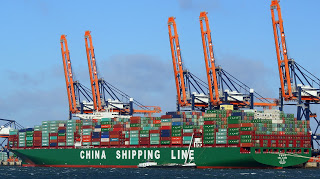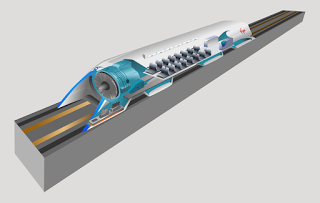Green Energy
By Ben Swerdlow, Policy Extern
- Multifunctional Biomass System
Biomass is known to play a big role in mitigating greenhouse gas emissions by supplyingbiomass based fuels. Low share of biomass application in many parts of the globe is eminent, and this is attributed to the high production costs and low availability...
- Green Car
What is a Green Car? We know that car is one of an important transport of our daily life. But, it should also remember that car is one of prime environment polluter. It pollutes air by emitting poisonous gas and causes damage to green nature of the planet....
- Green Products
What is Green Products? Green products are the biodegradable environmentally friendly products. During using these products, there is no hazard in the earth and environment when it is released to the air, water or earth. These types of products decompose...
- Uk Tops Solar Race
First International Energy Efficiency Scorecard of 12 Major Economies Also Finds Germany, Italy, and Japan Ranking Highly; U.S. Behind Most Countries, Including China, France, and Australia.WASHINGTON, D.C. – The United Kingdom comes in first...
- Friction Reduction On Ship Hulls By Blowing Bubbles: By Mitsubishi
Feb 2012: Mitsubishi Heavy Industries (MHI) and transport company Nippon Yusen Kaisha (NYK) has planed and tested out effectiveness of a system which will reduce the frictional resistance between the seawater and vessel's bottom by using a layer...
Green Energy
Overhauling America’s Transportation System
By Ben Swerdlow, Policy Extern
In connection with my previous blog post advocating for self-sufficient green communities, I am going to now turn to the future of transportation, with an emphasis on the transportation of freight. This week’s post specifically focuses on freight because of the large but not always visible role it plays in our lives. Each year, approximately 40 tons of freight are shipped for every person in the United States. This freight can account for a significant amount of emissions.
 |
| Container ship CSCL Globe By Kees Torn via Wikimedia Commons |
Just as the internet has brought the world together, so has the shipment of goods in international commerce. In 2014, an estimated 10 billion tons of freight was shipped around the globe, which represented a 66% increase from goods shipped in 2000. With the expectation of continued growth, we must ensure that there is an efficient process to transport all of these goods. Moreover, as more and more goods are shipped, it is imperative that we assess the current status of this shipment system to make it more efficient and green for the future.
To understand how we can increase efficiency in the shipping industry, it is first important to understand the steps involved in the shipment process. The first leg of a shipment’s journey is often on a ship, which is currently where an estimated 90% of global trade occurs. Increasing efficiency in maritime transport is important, especially considering a recent European Parliament report estimated that the emissions from shipping, which currently account for three to four percent of carbon emissions, could be as high as 17 percent by 2050.
Maritime shipping is currently considered the most carbon efficient transportation method. However, it is still important that we implement emissions controls and consider some alternative fuel sources for oceanic transport. Currently, ships are primarily fueled by Heavy Fuel Oil. This type of fuel is particularly high in sulfur, leading to significant sulfur oxide and nitrogen oxide emissions. With technology ever improving, there have been several attempts at “green” cargo ships, including a partially solar powered cargo ship, and, in future development, an LNG Cargo Ship and even a Dyna-rig Sail System. So far, though, petroleum remains the fuel of choice for the near future, with LNG possibly playing a larger role in the next few years.
Following the journey on ship, the product can either go from port on a train or a truck. This choice can lead to vastly different emissions. With current technology, a train is four times as fuel efficient as a truck, which indicates that we should favor train transportation. However, the American Trucking Associations report that 70% of the tonnage moving throughout the U.S. is currently carried by truck. The reason for this preference of trucks over trains is due to the flexibility that transportation by trucks allows.
In order to shift what has become a relatively inefficient overland shipping process that heavily relies on individual trucks, there needs to be a technological shift that can enable a transition to a more green and efficient transportation system. Though it may not be easy to achieve such a shift, a system that can provide green, fast and reliable shipments over great distances could move us away from our current processes. A system like the Hyperloop could forward this shift.
 |
| Concept Drawing of Hyperloop By Camilo Sanchez via Wikimedia Commons |
Hyperloop is an enclosed high-speed transportation system, which relies on low friction to travel at speeds approaching 700 miles per hour. To achieve these high speeds, the system uses vacuum tubes where the individual pods can travel. Air compressors on the front of the pods pull the pods forward, while also using that air to levitate with air bearings (effectively, air is used to push the pod up just above the ground). The pod is then propelled forward using linear induction motors, which work via the same principals as a typical induction motor (a normal electric motor) but instead of creating rotational force, these motors provide force in a straight line.
Building an advanced transportation system, such as Hyperloop, will have a significant effect on how goods are shipped, due in part to the speed that they can be shipped. Even though speed is becoming less of a factor these days due to product forecasting, a system which can move faster than any other method will provide so much additional flexibility that not even the benefits of trucks can outweigh.
While a Hyperloop system could be implemented in several ways, it could provide the most benefit if the system was used to transport freight directly from a port to a distribution center miles away. This would allow goods to be processed closer to their delivery locations. This model could significantly reduce the number of trucks needed for transportation, relieving congested highways and drastically decreasing emissions.
Overall, technologies like Hyperloop have the potential to disrupt a transport system that relies on old, inefficient technology. This is a very important time in the shipping industry, due in part to emerging technology and in part to the drastic increases in freight shipping. It is therefore imperative that we use this time to look at the shipping system as a whole and prepare for the future.
My next blog post will discuss future technologies for trucks and cars, which have the potential to drastically change how we interact with our personal vehicles.
- Multifunctional Biomass System
Biomass is known to play a big role in mitigating greenhouse gas emissions by supplyingbiomass based fuels. Low share of biomass application in many parts of the globe is eminent, and this is attributed to the high production costs and low availability...
- Green Car
What is a Green Car? We know that car is one of an important transport of our daily life. But, it should also remember that car is one of prime environment polluter. It pollutes air by emitting poisonous gas and causes damage to green nature of the planet....
- Green Products
What is Green Products? Green products are the biodegradable environmentally friendly products. During using these products, there is no hazard in the earth and environment when it is released to the air, water or earth. These types of products decompose...
- Uk Tops Solar Race
First International Energy Efficiency Scorecard of 12 Major Economies Also Finds Germany, Italy, and Japan Ranking Highly; U.S. Behind Most Countries, Including China, France, and Australia.WASHINGTON, D.C. – The United Kingdom comes in first...
- Friction Reduction On Ship Hulls By Blowing Bubbles: By Mitsubishi
Feb 2012: Mitsubishi Heavy Industries (MHI) and transport company Nippon Yusen Kaisha (NYK) has planed and tested out effectiveness of a system which will reduce the frictional resistance between the seawater and vessel's bottom by using a layer...
